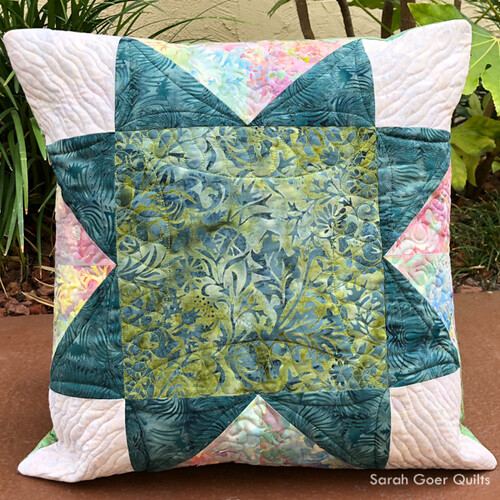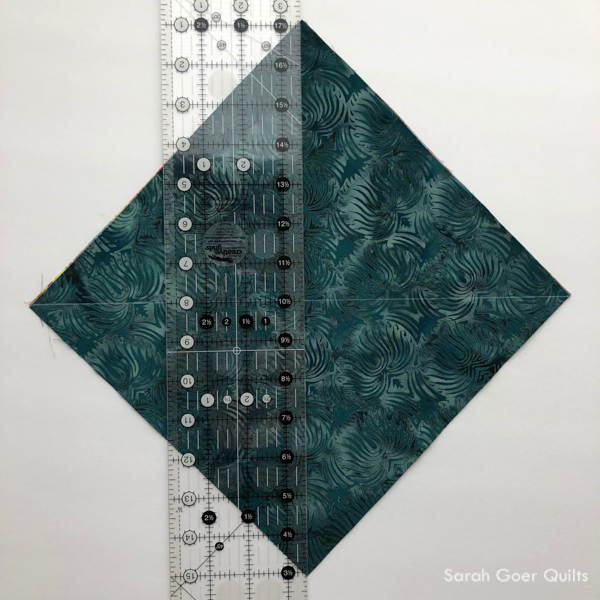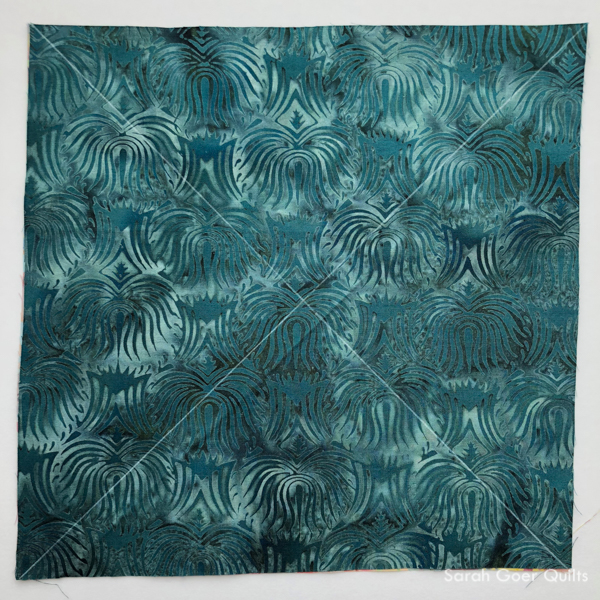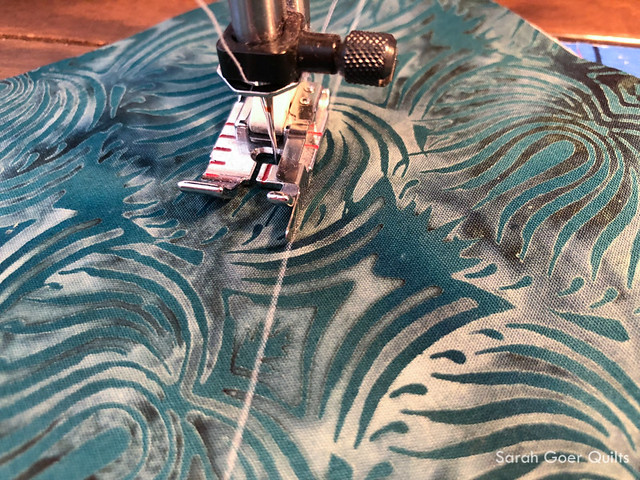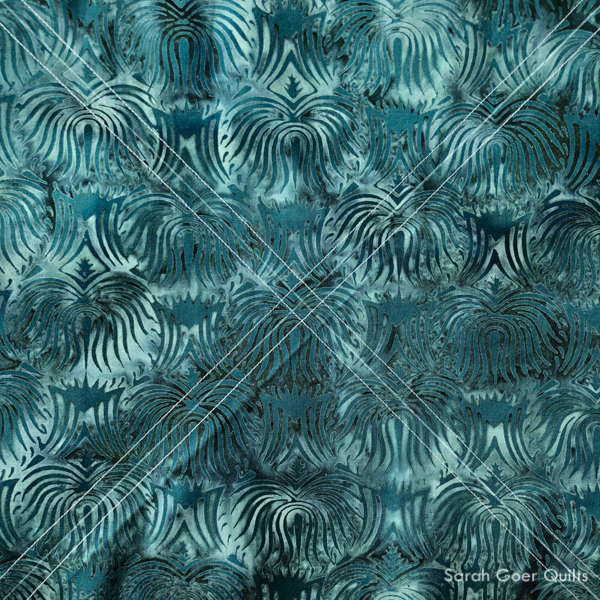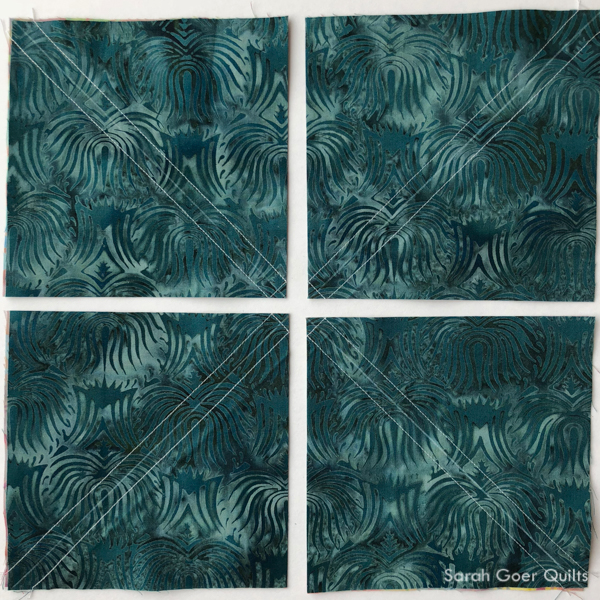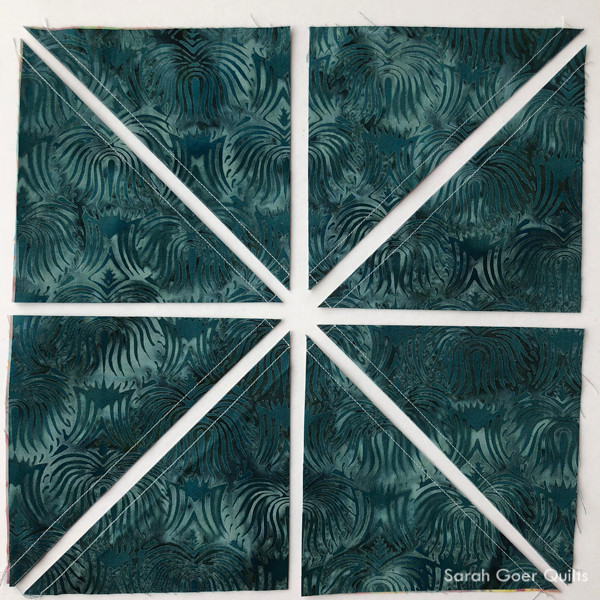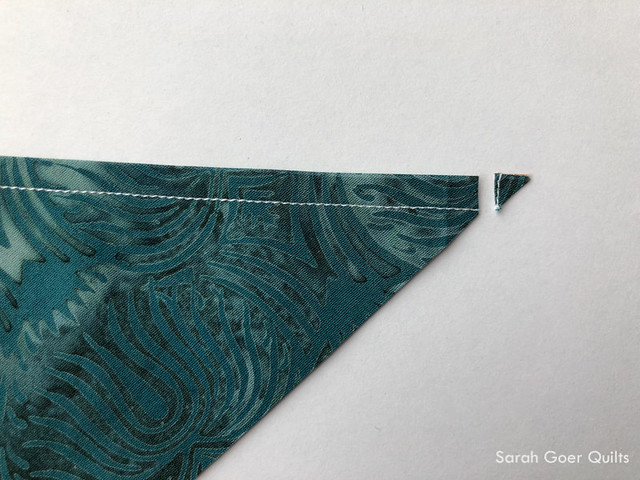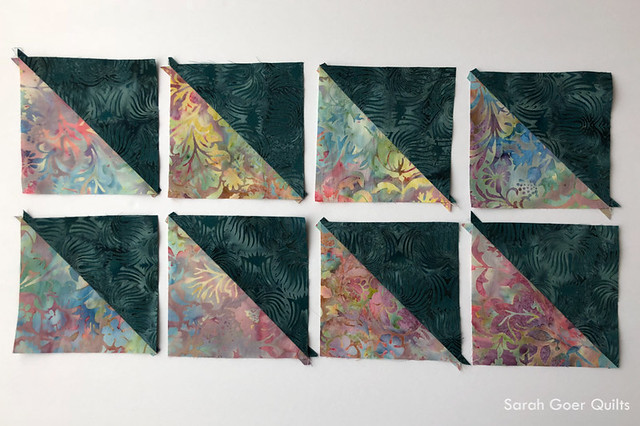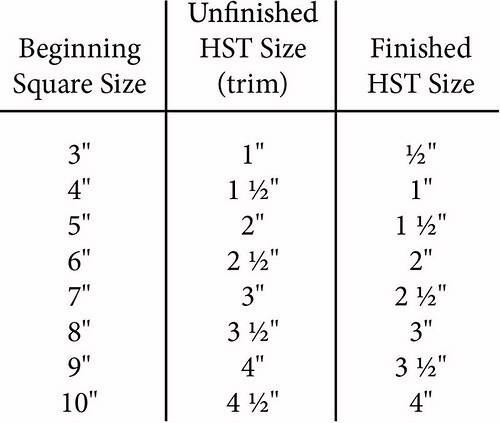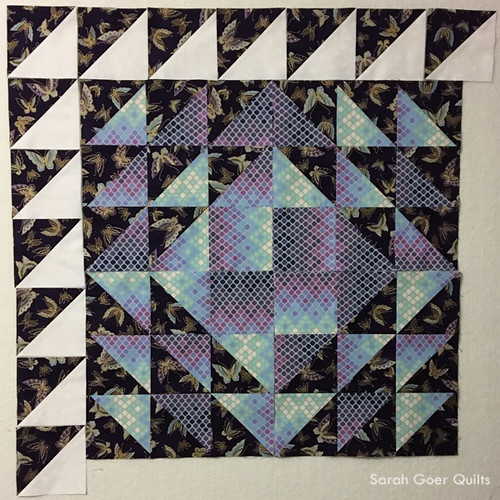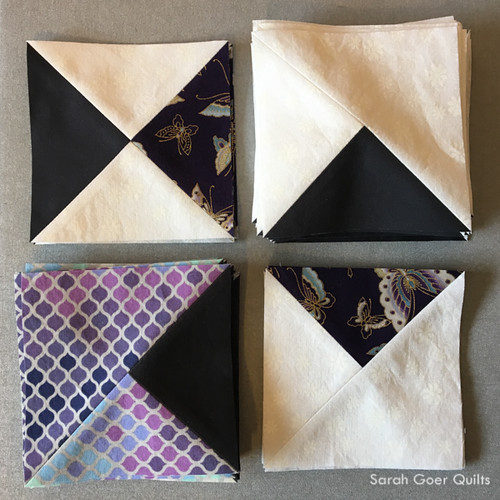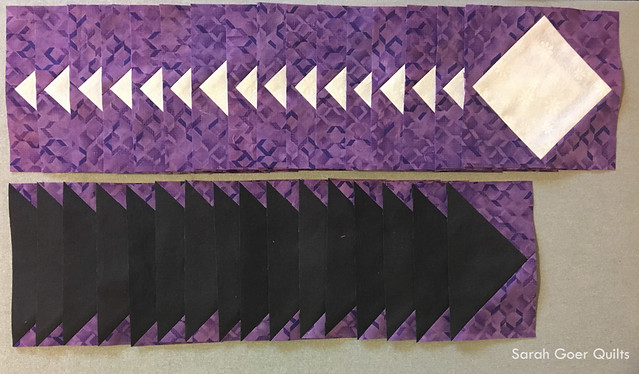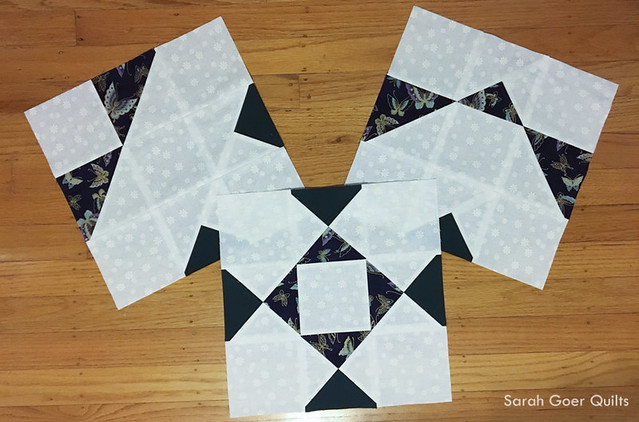I use the descriptor "planned improv" loosely. Sometimes the improv comes in the piecing. Sometimes it comes in the design work before piecing starts. In this case, the improv had to do with having no idea where I was going when I started piecing scraps together. And the plan was that HSTs would be involved, and I was working with a limited amount of scraps (at the beginning) with a limited color palette (that I'd curated for the bag of scraps).
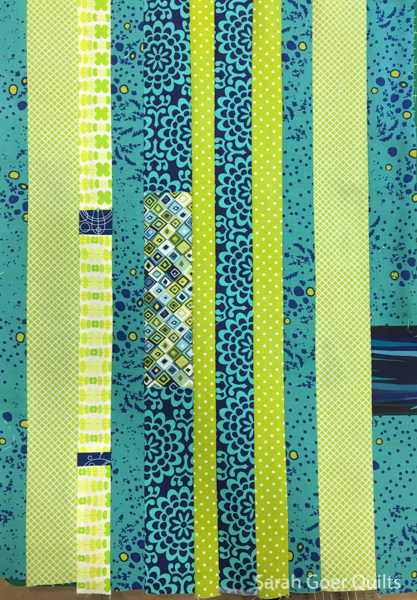
This quilt has been a long time coming. The scraps that were the start of it predate February 2016 when I took Jeni Baker's Creative HST workshop at QuiltCon in Pasadena. (We won't discuss how these are scraps from another project that is not yet finished.) This three-hour evening class was a chance to play. I finished my first four blocks for this quilt that night and eventually went on to create 140 more!
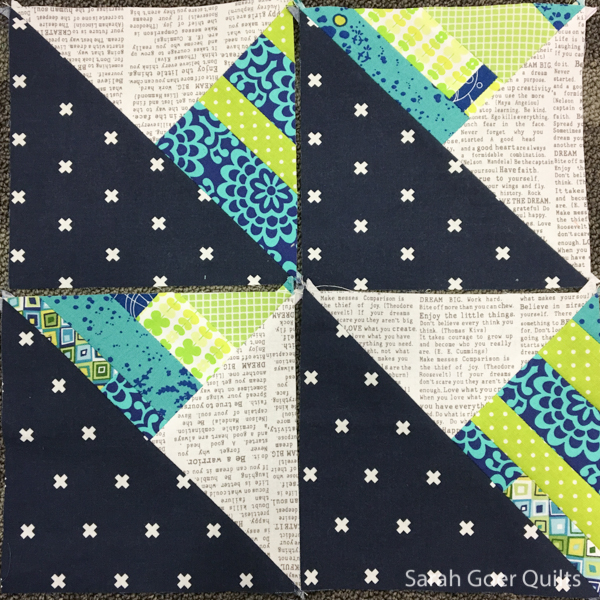
As with many of my quilt projects, I worked on this one intermittently over the years. It had no deadline or destination. The quilt top was finally finished at a quilt retreat in September 2018. I mailed it away to be quilted (by Jess Zeigler) in December 2019. No rush on this one. ;-)
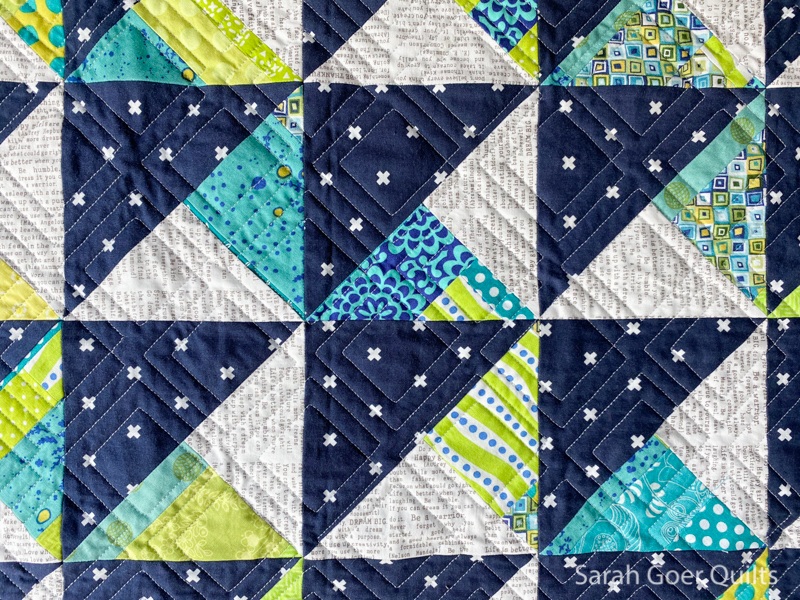
I finished the quilt with a faced binding in order to submit to it PIQF in October for their Online Quilt Festival.
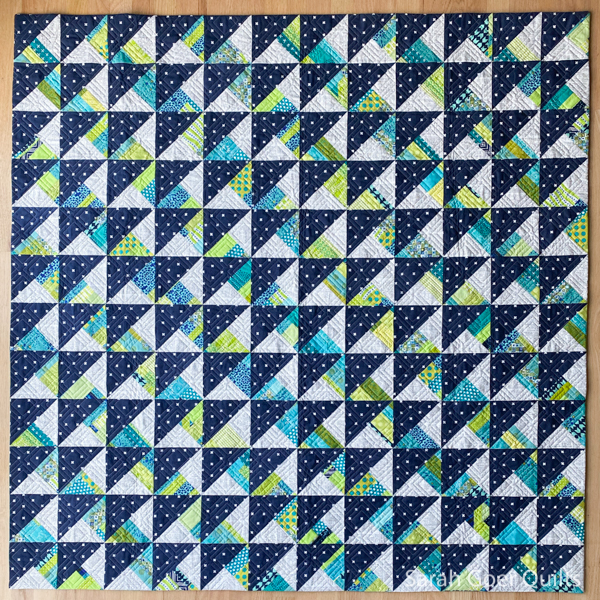
It's 59" x 59". I plan to hang it in my entryway.
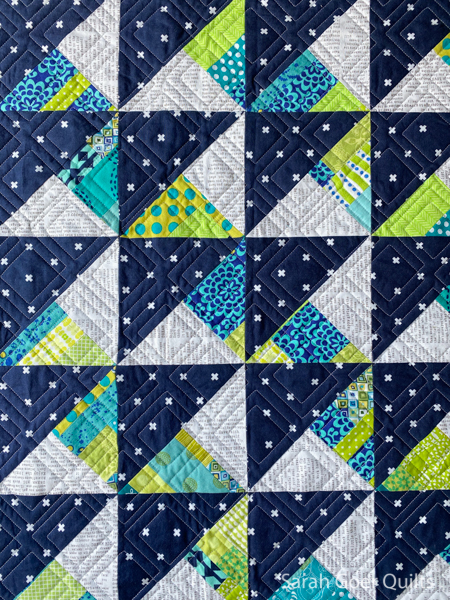
Unrelatedly, check out the new short film, Canvas, on Netflix.


